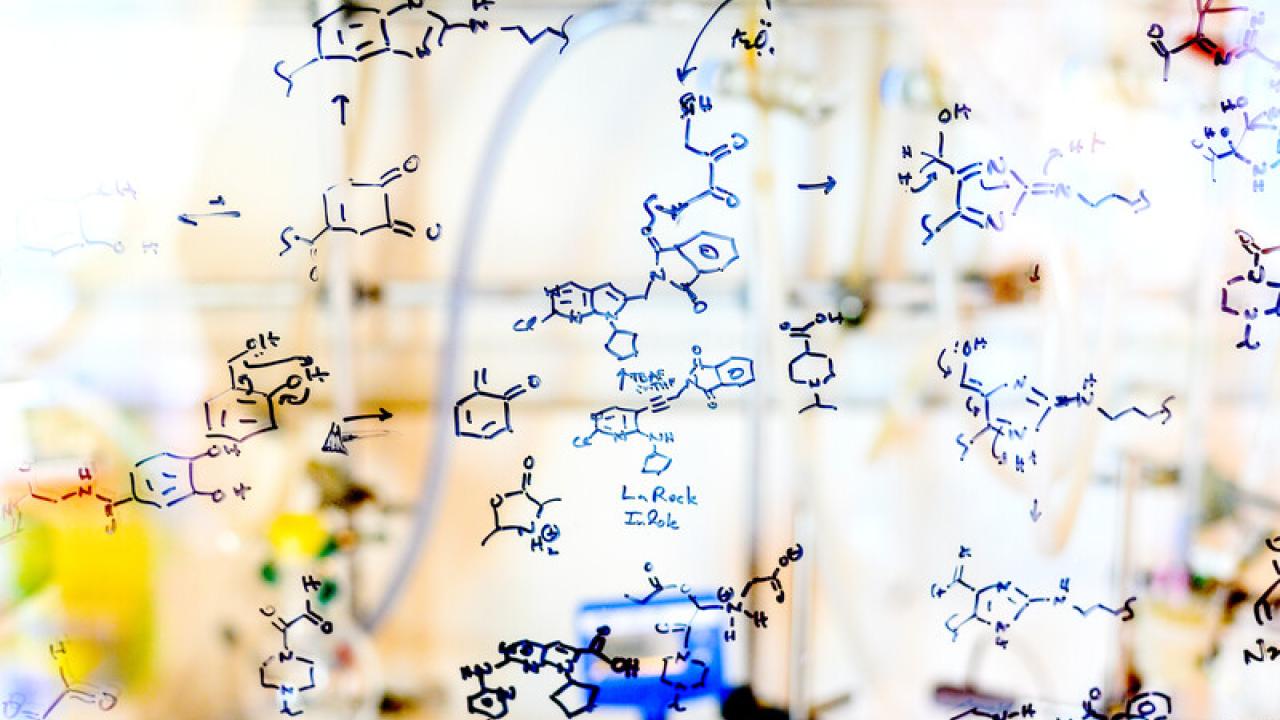
Sketches cover a hood shield in UCSF chemist Kevan Shokat’s lab. Photo by Noah Berger
A fundamental challenge in drug development is the balance between optimizing a drug’s lock-and-key fit with its target and the drug’s ability to make its way across the cellular membrane and access that target. The search for cell-permeable drugs has conventionally focused on low-molecular weight molecules with rigid, nonpolar chemical structures. However, emerging therapeutic strategies break traditional drug design rules by employing larger, flexibly linked chemical entities.
In a study published December 8, 2022 in Science, UCSF researchers Kevin Lou, an MD-PhD student, Luke Gilbert, PhD, and Kevan Shokat, PhD, reveal the discovery of a cellular uptake pathway important for larger molecules. These large and complex molecules bind in unconventional ways to their targets, are efficiently taken up by target cells, and can be harnessed to create new drugs for the treatment of cancer and other diseases.
Through a combination of functional genomics and chemical methods, the scientists uncovered an endogenous pathway involving interferon-induced transmembrane (IFITM) proteins that promote the cellular uptake of diverse linked chemotypes. These proteins are found in plasma membranes and often provide cellular resistance to viruses.
Most traditional pharmaceuticals are small molecules that follow simple molecular rules including limits on the molecular size and number of sticky chemical groups on the molecule’s surface. Many key drug targets, such as kinase enzymes often involved in cancer, are difficult to selectively target with traditional drugs.
“There are over 500 human kinase enzymes that are very similar in the pocket where the drug binds, making it a challenge to selectively target a single member of this family and leading to undesirable medication side effects,” explains the study’s first author Kevin Lou. “Increasingly, it has been found that certain linked molecules outside this traditional framework can maintain drug-like properties and gain new mechanisms of action.”